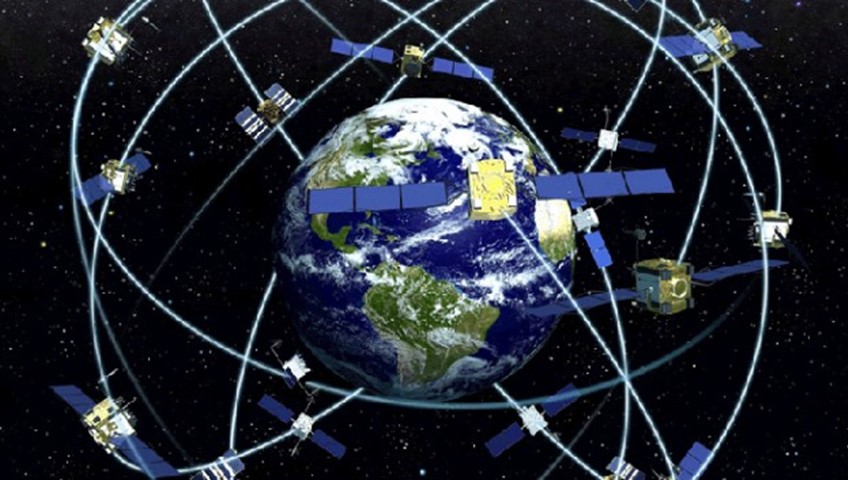
Russia now has an ‘inspector satellite’ that could chase down or destroy other orbiting spacecraft
Back in December 2013, Russia launched a trio of Rodnik military communications satellites, and a fourth unknown object, on board a Rokot/Briz-KM rocket. At the time, Russia didn’t acknowledge the presence of the fourth object — known only as Kosmos 2499 — but for obvious reasons launches are very closely watched by foreign governments and civilian satellite observers. The US military originally thought it was just a piece of debris, but one independent observer — Robert Christy — had seen this “debris” fire its engines to carry out some maneuvers. Eventually, in May 2014 Russia told the United Nations that there had actually been four satellites on board the rocket — though it still declined to say what that fourth satellite was actually doing.
This is a map of the density of communications satellites around Earth. As you can see, there are serious dangers to even a minor collision.
This is a map of the density of communications satellites around Earth. Lots of satellites that could be eavesdropped on…
According to Christy, Kosmos 2499 has spent the last year maneuvering closer and closer to the Briz-KM upper rocket stage, which has been hanging out in low Earth orbit since it delivered the four satellites. With a series of very controlled engine burns — both spacecraft have an orbital velocity of around 17,000 mph — Kosmos 2499 is now just a few meters from the upper stage. In short, it appears to be an inspector satellite — a satellite designed for the sole purpose of sneaking up on other satellites.
Kosmos 2499 is most likely a proof of concept for a future Russian satellite that actually does something — such as taking photos of military satellites that belong to other countries, refueling its own satellites… or something far more nefarious, such as blowing other satellites out of the sky. The problem with doing anything malicious, of course, is that everyone with a telescope can see exactly what’s going on — so it’s unlikely that Russia would actually do anything untoward. Just like missile launches, nuclear tests, and large military exercises in the Persian Gulf, inspector satellites are all about showing the world that you can do something, not that you’ll actually do it. (Not to mention, there international treaties in place that are meant to prevent the weaponization of space.)
It’s also worth pointing out that the US has had similar technology for years. Way back in 1990, the NRO’s highly classified Prowler spacecraft was launched from Space Shuttle Atlantis to study Russian geosynchronous satellites. More recently, the US Air Force launched an ANGELS satellite on in July 2014 that uses “sophisticated artificial intelligence” to closely maneuver around other orbiting spacecraft. China, too, seems to be trialing similar technology with its Shijan 15 satellite, which has been in orbit since last summer.
So, there you have it: Most of the world’s major space agencies now have the ability to launch satellites that can, at velocities of around 5 miles per second, autonomously maneuver itself close to another hypersonic satellite. Short of all-out war, no one is likely to exercise its ability to blow up each other’s satellites — but when that war does come, the first nation to knock out all the other communication and reconnaissance satellites will obviously have a rather large advantage.

